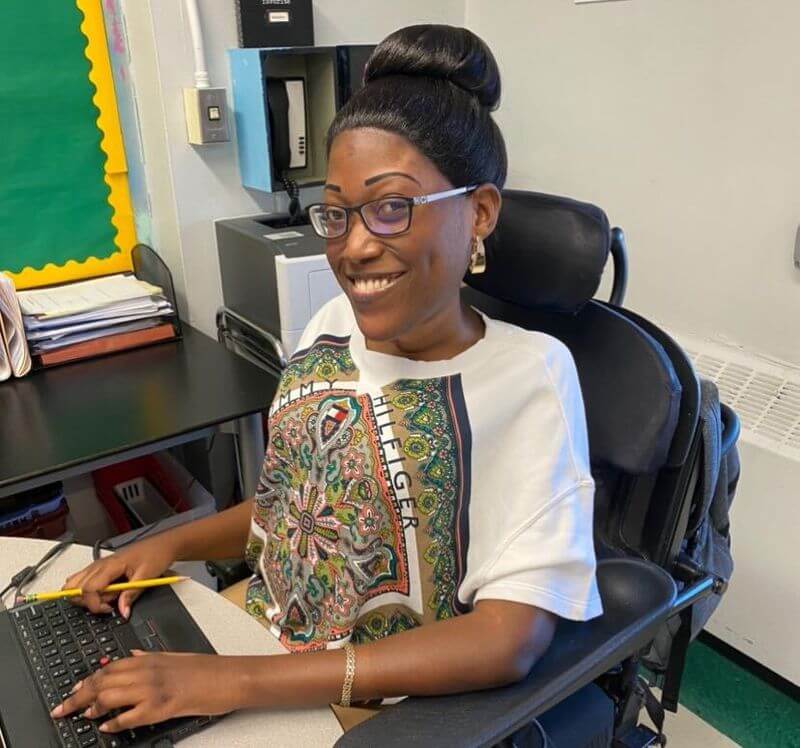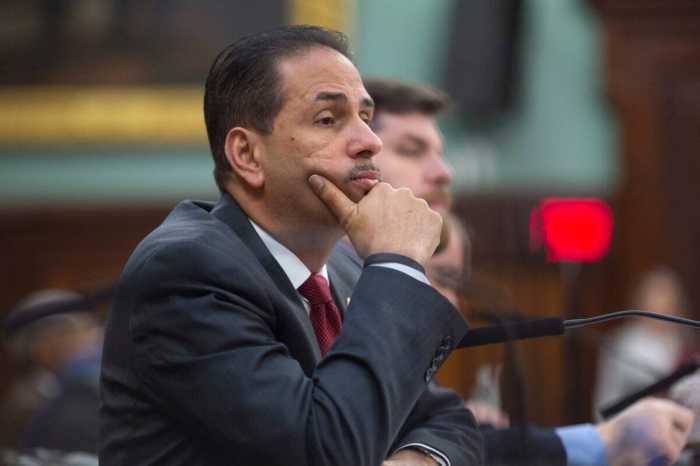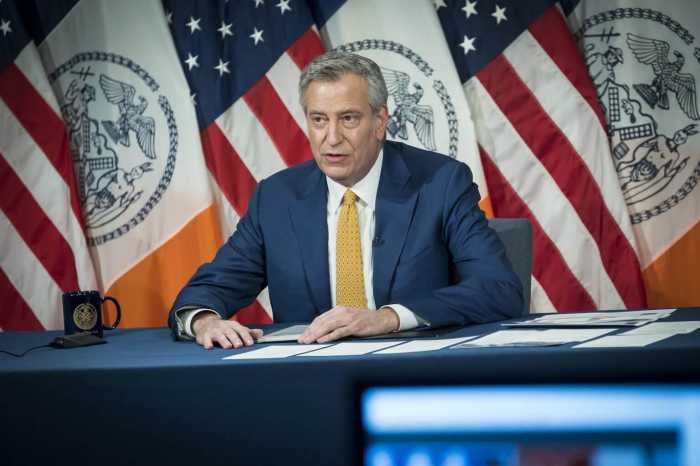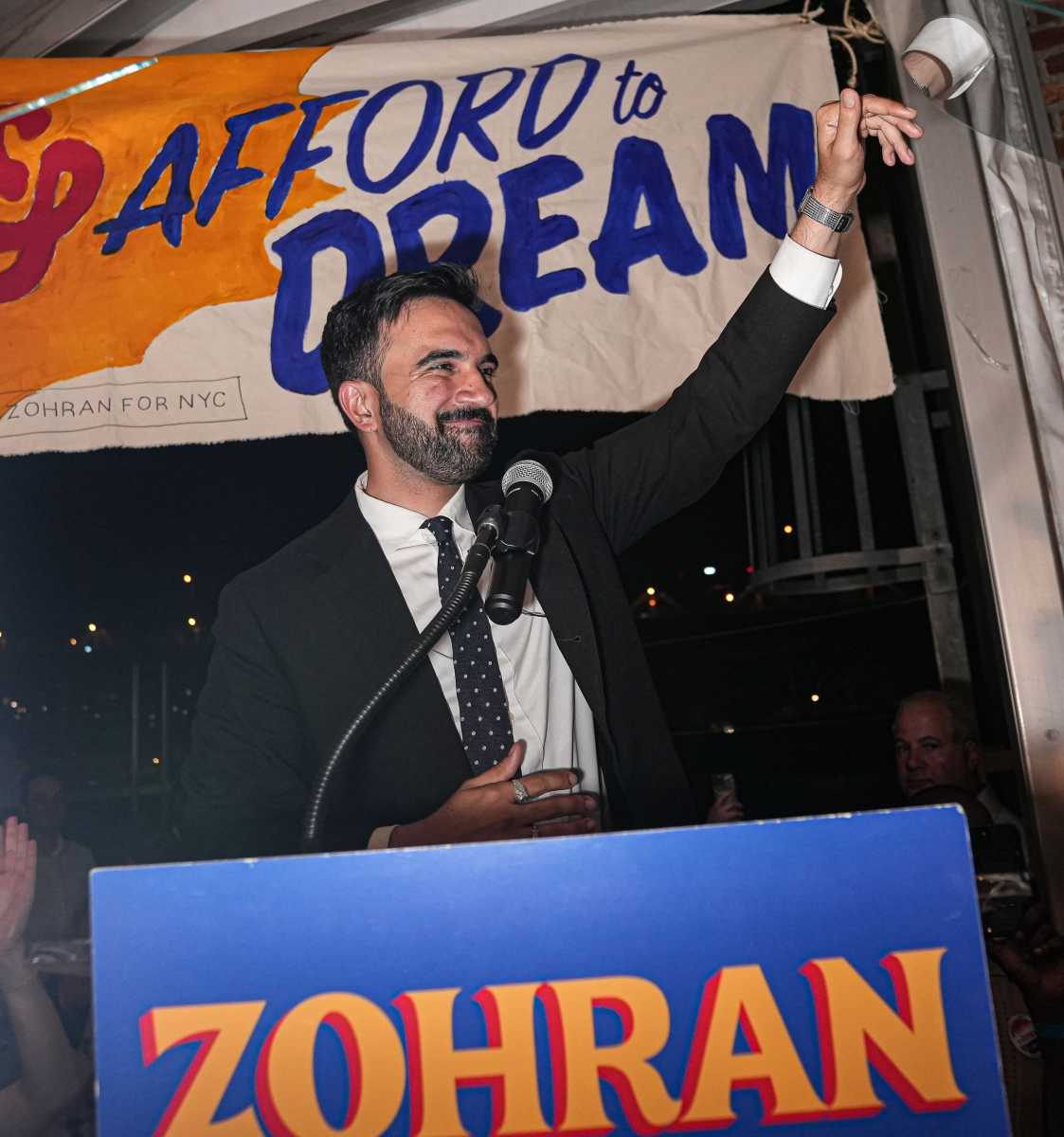Despite a litany of physical limitations — a life diagnosed with spinal muscular atrophy (SMA) that has left her wheelchair-bound and unable to walk and bathe herself — Dayniah Manderson has excelled as an English teacher in New York City.
“The best thing about teaching is the kids, and being able to see how much they grow and process over the school years,” said Manderson, who has an 18-year tenure with the New York City Department of Education (DOE). “But there is a culture in which teachers and the students are not being treated fairly by the Department of Education.”
For eight years, Manderson had to forgo using a restroom for 12 hours or more on most days because her school building — the Mott Hall Community School in Throggs Neck — didn’t have ADA-compliant facilities provided by the DOE.
“It’s a basic human right, and it’s dehumanizing when you are not able to use a bathroom at your place of employment,” Manderson, 41, told the Bronx Times. “It’s a systemic failure and there were situations where I didn’t feel like I was being treated like a human.”
In March, Manderson filed a discrimination charge with the Equal Employment Opportunity Commission, alleging the DOE failed to build her an accessible bathroom for the 12 years she worked at Mott Hall in violation of the Americans with Disabilities Act.
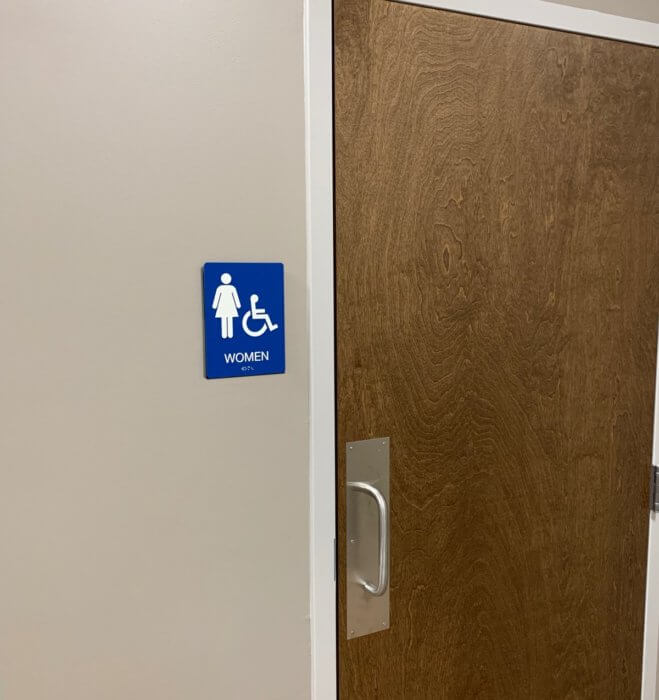
Per the court-sanctioned judgment, the DOE is now ordered to provide seat risers enabling Manderson to use the restroom safely at work.
The DOE also needs to repair the restroom’s automatic door opener and ensure that Manderson has access to an “unobstructed and secure” evacuation space in the event of an emergency, and to train DOE staff regarding maintaining this clear path of travel, according to an offer of judgment approved by the Federal District Court for the Southern District of New York last week.
“I think that there should be at least a standard format (of accommodation) that needs to be met, and it depends on what it looks like to accommodate me in the event of a fire and having a safe way to escape besides using the stairs or being in a combustible area,” Manderson said.
Manderson said that her experience is a symptom of larger systemic barriers within the city Department of Education.
A 2018 analysis of city data by the group Advocates for Children found more than 80% of the city’s roughly 1,800 public school buildings were at least partially inaccessible — meaning classrooms, hallways and bathrooms are out of reach for those who need it.
In the latest building accessibility report conducted on DOE buildings in September, more than 35 Bronx school buildings scored a “1” in terms of meeting ADA-compliance. In 2020, former Schools Chancellor Richard Carranza pledged to make half of all public schools partially accessible by 2024, but COVID-19 put a halt to those plans.
Manderson said it was “dehumanizing” not having a restroom that could accommodate the size of her wheelchair, and that a request for a bathroom renovation in 2018 was unmet by DOE officials.
“The chain of command ultimately failed because (my supervisors and their supervisors) are all working for the same organization,” she said. “I think that’s kind of why you have to try and link with other agencies and organizations who do the work in combating discrimination, because the organization that you work for is only going to protect themselves.”
DOE officials eventually expanded a stall in a restroom near Manderson’s classroom so that her wheelchair could fit, but the toilet seat was still too low to the ground, making it impossible for Manderson to safely transfer from her wheelchair.
In response, school construction officials placed a plastic booster on top of the toilet seat. But the plastic seat “is not in a fixed position, can shift during transfer, and places me at risk of falling,” Manderson alleged in her initial complaint.
In addition to not being able to access the restrooms, the evacuation room that Manderson needed in the event of a fire emergency was clogged with school supplies, according to complaint. Additionally, the court also orders Manderson’s student to write in online journals so that she does not have to physically carry up to 90 journals home from work, a request which the DOE had refused prior.
“Small steps are key to lasting change,” she said. Correcting the oppressive systems within public education doesn’t happen at the snap of a finger, but this judgment is a step in the right direction.”
Reach Robbie Sequeira at rsequeira@schnepsmedia.com or (718) 260-4599. For more coverage, follow us on Twitter, Facebook and Instagram @bronxtimes.

